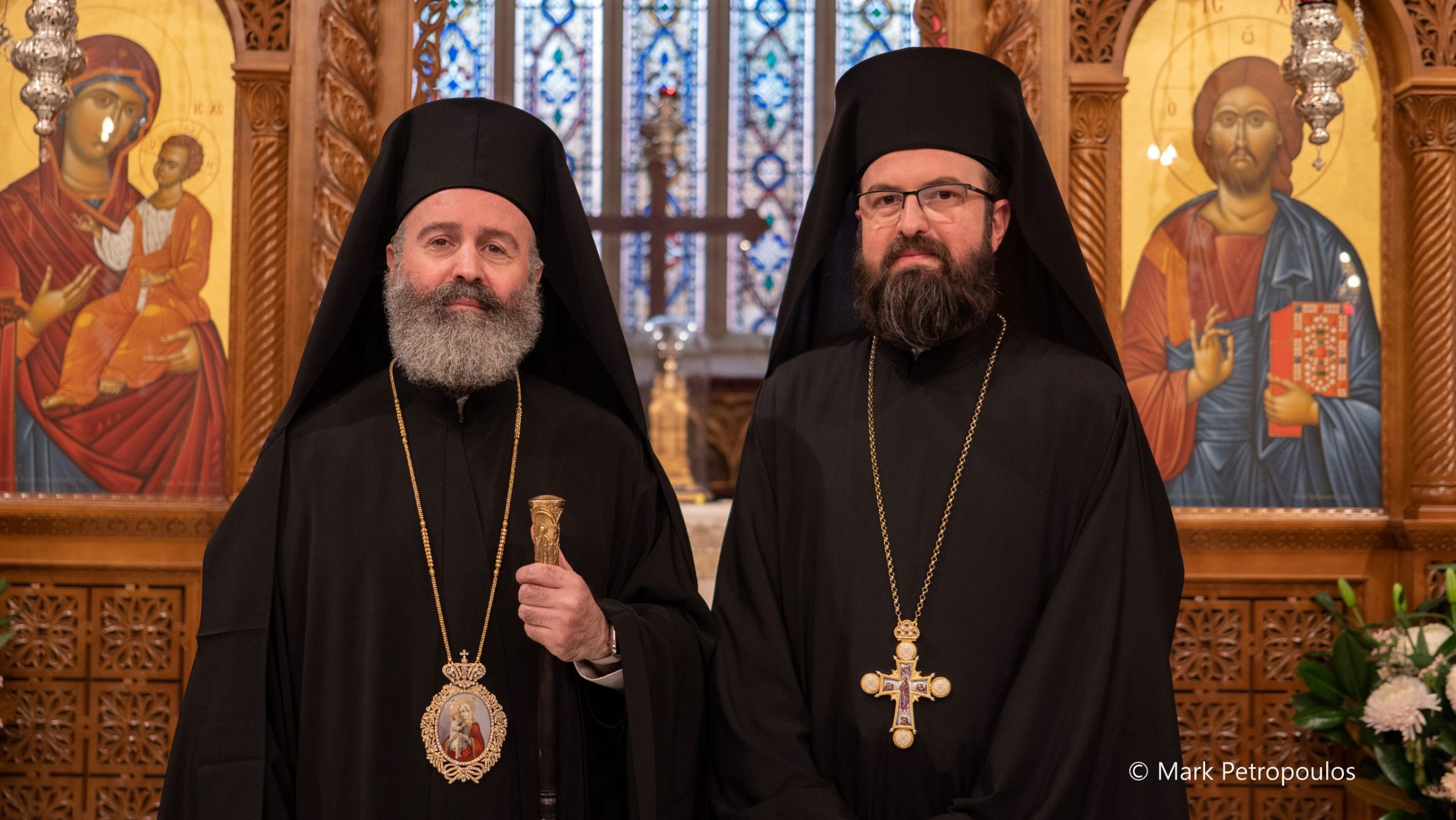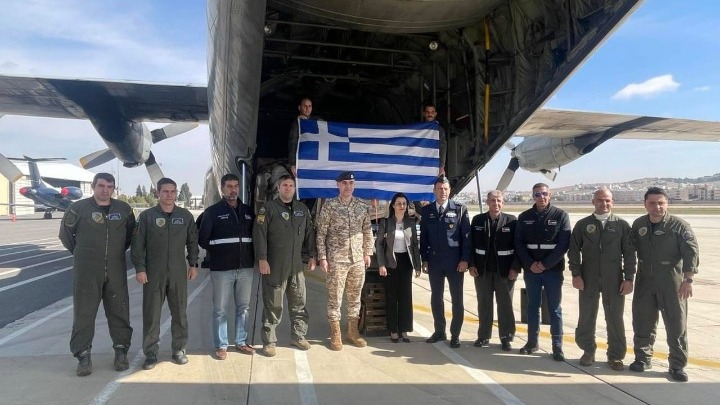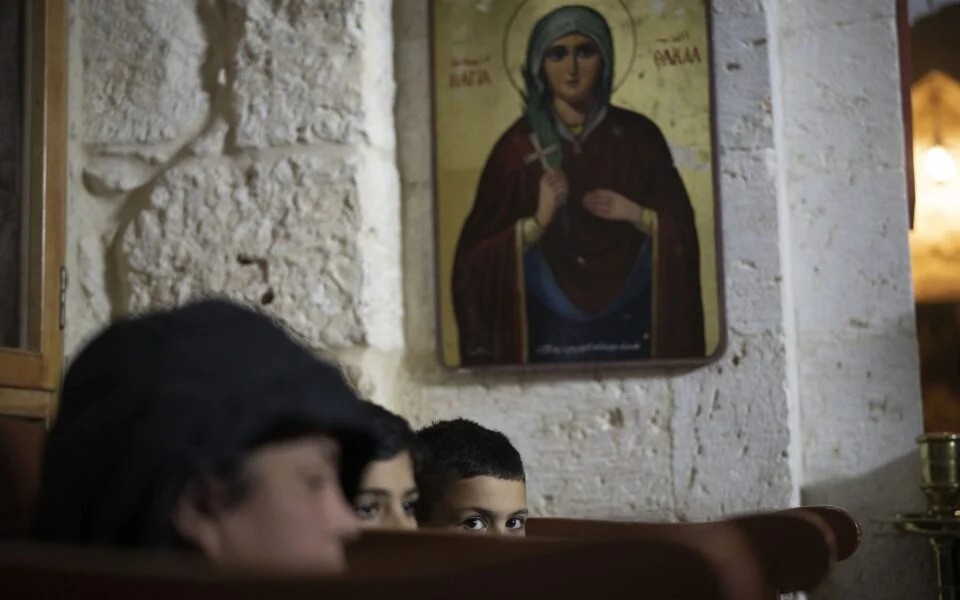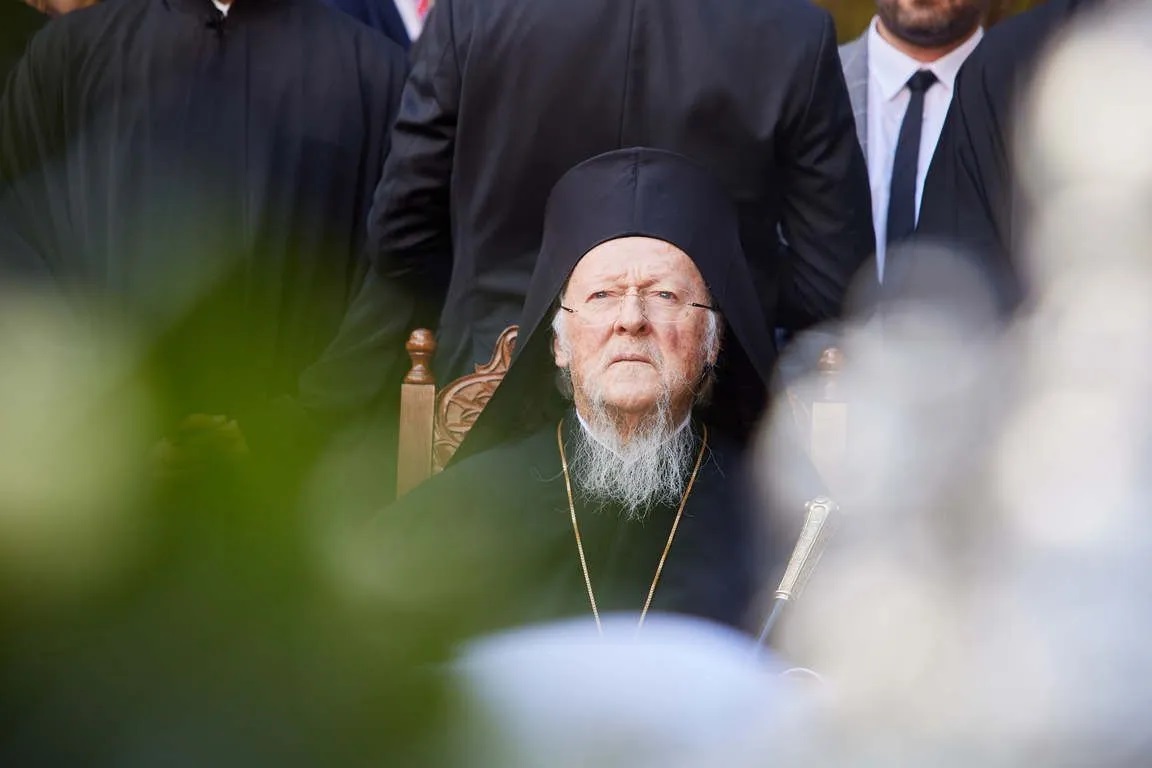The Future of the Church of Ohrid, the Ecumenical Patriarchate and the Church of Serbia


Indeed, both the EP and the SOC restored the Eucharistic communion with the Church of the Republic of North Macedonia (CNM) and brought it back from a schismatic state to ecclesiastical canonicality.
The EP acted on the basis of its right to receive appeals (see Canons 9 and 17 of the Fourth Ecumenical Council). Thus, it accepted the request made to the Ecumenical Patriarchate by the hierarchy of the CNM and restored Eucharistic communion with it. Accordingly, the SOC proceeded to the normalization of its relations with the CNM, apparently following the acceptance by the latter, following bilateral discussions, of the ecclesiastical regime of 1959, that is, the autonomy granted to it by the SOC at that time.
In addition, the EP stated that the CNM will not have as its title the term “Macedonia” or any other derivative thereof (as agreed in writing by the CNM). On the contrary, the SOC did not make this a prerequisite for the regulation of its relations with the CNM.
More specifically, the EP stated that the CNM would use the name [Archdiocese/Church] “Ohrid” as its official designation, while the SOC appeared less clear, as it stated that the name of this Church would be decided after a fraternal dialogue with the other Orthodox Churches, including the Church of Greece.
Of course, one can reasonably assume that the Church of Greece will never recognize another Church named “Macedonia”. Perhaps the stance of the SOC is also due to the objections that the Bulgarian Church could raise to the use of the title “Ohrid” because in the past this Archdiocese extended to the geographical area of the current Bulgarian State.
However, if the SOC wishes the decision on the title of the CNM to be taken through fraternal dialogue, then the designation ‘Macedonian’ should de facto be excluded. In any case, the EP seemed to have a clear position on this aspect, unlike the SOC which followed a different logic.
As regards the jurisdictional boundaries of this new Archdiocese/Church, the EP clarified that these should not extend beyond the territory of the Republic of North Macedonia. Again, the SOC appeared less clear in this respect, as it stated that it was not bound ‘to restrictive clauses on the extent of the jurisdiction of the [CNM] within the country and on the diaspora’.
This may also be due to the fact that the SOC believes that the faithful of the Greek diaspora will be included in the ecclesiastical structures it maintains. For its part, the EP could not deny its rights around the exclusive administration of the Orthodox diaspora communities under Canon 28 of the Fourth Ecumenical Synod.
In our view, the limitation of the CNM within state boundaries is also intended to avoid future territorial ambitions on the part of the CNM that could affect other ecclesiastical jurisdictions. If this risk can only be avoided by agreeing on the title of the new Church (as the SOC sees it), for the EP this is a question that also requires a territorial demarcation.
The EP did not specify the ecclesiastical status of the CNM, although it implicitly indicated it. Thus, the EP Synod instructed the SOC “to regulate administrative matters between itself and the Church of North Macedonia, within the framework of canonical order and ecclesiastical tradition”. In other words, the EP did not state whether the new Archdiocese/Church should be autocephalous, autonomous, or semi-autonomous.
Of course, it is not difficult to assume that the EP would never grant another Church its right to grant autocephaly. For its part, the SOC stated that the status of the CNM would be that of ‘the widest possible autonomy, i.e. full internal independence’. Therefore, the solution implicitly proposed by the EP as the only canonical status of the CNM is autonomy, which was mentioned in the communiqué of the Serbian Synod of May 16.
From the above, it is clear that the interventions of the two Churches have elements of convergence. But there are also some deviations. For example, in its communiqué, the EP did not refer to the Patriarchal Tomos of 1922, nor did it refer to the SOC as the “mother” Church of the CNM, although it asked the SOC to regulate its administrative relations with the CNM and thus recognized its right to finalize, at least in executive terms, the solution of the schism.
On the other hand, the SOC did not refer to the decisions of the EP Synod (although it responded indirectly to the issues raised by the latter, such as the issue of the name and jurisdiction of the new Archdiocese/Church), nor did it state that it would consult the EP or implement the decisions taken by the Phanar. In other words, the SOC acted as a Church that considers itself capable of providing a canonical solution independently of the EP, thus showing that it does not perceive itself as the executive arm of the decisions taken by the Phanar.
It can be argued from what has been said that:
a) The EP set the general framework of the ecclesiastical status of the new Archdiocese (name and limits of jurisdiction).
(b) The SOC, without formally taking into account the decisions of the EP, did not make final decisions on the name of the CNM, nor set its canonical limits.
Of course, one cannot help noticing that the tone of the two synodal decisions is peaceful, that the aggressive spirit is absent – even through this… silence of the two sides – while, as mentioned, there is room for consensus around the name and the canonical status of the new Church.
Another issue is whether the EP should proceed with the resolution of the schism without prior consultation with the SOC. In other words, the question is whether the EP has the right to resolve ecclesiastical issues concerning the canonical territory of other Churches. Of course, the EP has left the SOC to determine its exact administrative relationship with the CNM. In other words, it acted within the framework of the privileges that the “first” Church has in Orthodoxy in terms of resolving Orthodox differences, without acting with “exclusivity” in terms of providing administrative solutions, although this act may not be embraced by the SOC.
Finally, if not less importantly, one should not ignore the role of the CNM itself in the acceptance of the synodal decisions of the two Churches. In an effort to restore communion with the other Orthodox Churches, the CNM appealed to the EP and at the same time entered into discussions with the SOC (previously also with the Bulgarian Church).
Therefore, it can be argued that to the extent that the CNM will accept the canonical solution offered to it – taking into account the guarantees it gave to the EP regarding its name (the non-use of the name “Macedonian”) and to the SOC regarding its ecclesiastical status – it will show its willingness to fully integrate into the society of Orthodoxy around the world.
Therefore, one can only rejoice that the Eucharistic communion between an individual Church and the other Orthodox Churches has been restored, at a time when Orthodoxy is suffering from various tensions.
As we have seen, the general context of the ecclesiastical identity of the CNM has been largely determined by the synodal actions of the EP and the SOC. If there are still some open questions, such as the cases in which the EP can intervene in intra-Orthodox cases and how its interventions are accepted by the other Churches or how the pan-Orthodox consensus is expressed (to the extent that consensus is a criterion for the unity of global Orthodoxy), the problem of the CNM seems to have been solved without causing further ruptures in the wounded body of the Orthodox Church.
At least these were the indications, until the request submitted by the President of the Republic of North Macedonia to the Ecumenical Patriarch to give autocephaly to the CNM, along with the announcement made by Patriarch Porfirije of Serbia on May 24 on the recognition of the autocephaly of the CNM. During the Eucharistic co-liturgy at the Cathedral of Skopje, Patriarch Porfirije of Serbia said that “the Holy Synod of the Church of Serbia responded unanimously to the appeals of the Orthodox Church of (Northern) Macedonia and accepted and recognized its autocephaly.”
Initially, this statement could be understood in the context of the Synodal Decision of the SOC of May 16 on the Status of 1959, namely that of ‘the widest possible autonomy’ and ‘full internal independence’. But one is “internally” independent when one exists within a larger entity to which one belongs.
Finally, rather in contrast to the published decision of the Serbian Synod of May 16, on June 5, Patriarch Porfirije handed over “Tomos of Autocephaly” to Archbishop Stephan of the “Macedonian Orthodox Church – Ohrid Archdiocese”, invoking the 34th Apostolic Canon (!) “blessing, granting and recognizing” the canonical status of an autocephalous Orthodox Church. The Tomos will be submitted for approval to the other Autocephalous Churches because the SOC considers that it is not “the only factor of autocephaly”, but this concerns the completeness of the Orthodox Church, which is why the acceptance of the other Orthodox Churches is required.
The autocephaly granted by the SOC is ‘complete’, i.e. complete independence from the SOC without territorial restrictions.
Furthermore, the SOC considers that the new Church “is the successor of the ancient and glorious Ohrid Archdiocese, because of which its title includes its honorary name, which covers the canonical space of the previous and homonymous autonomous Church of our Serbian Patriarchate of 1959”. The Tomos does not set jurisdictional limits within the State of the Republic of North Macedonia but recognizes the jurisdiction of the CNM in the diaspora as well.
Finally, the SOC recommends that the CNM resolve the issue of its name through a fraternal dialogue with the “Greek-speaking” and other Local Orthodox Churches.
Rather, this means that the CNM will not have ‘internal’ autocephaly within the SOE, but that the SOC has created a new ecclesiastical entity. But what will be the reaction of the SOC if a Tomos of Autocephaly is issued by the Ecumenical Patriarchate? Can a volume be granted without a solution to the sensitive issue of the name, asking the other Churches to discuss the title of the new Church?
For the time being, on the day after the concession of the Tomos of Autocephaly by the SOC, the CNM stated in a press release that “we express our pan-Orthodox ecclesiastical hope that in the future, that is, when it is decided, the finalization of our ecclesiastical issue will begin with the publication of a globally recognized Tomos by the Ecumenical Patriarch Bartholomew, in accordance with his canonical and historical privileges.” Therefore, it seems that the Hierarchy of the CNM does not want its ecclesiastical existence to become the cause of a new conflict between the Orthodox, but to integrate smoothly into society with the rest of the Orthodox world.
One realizes that the next few days will be crucial for the development of this issue that affects global Orthodoxy in different ways.
* Dimitrios Keramidas is a Professor at the Pontifical University of St Thomas Aquinas “Angelicum”, a member of the Center for Ecumenical, Missionary and Environmental Studies “Metropolitan Panteleimon Papageorgiou”
Source: orthodoxtimes.com





